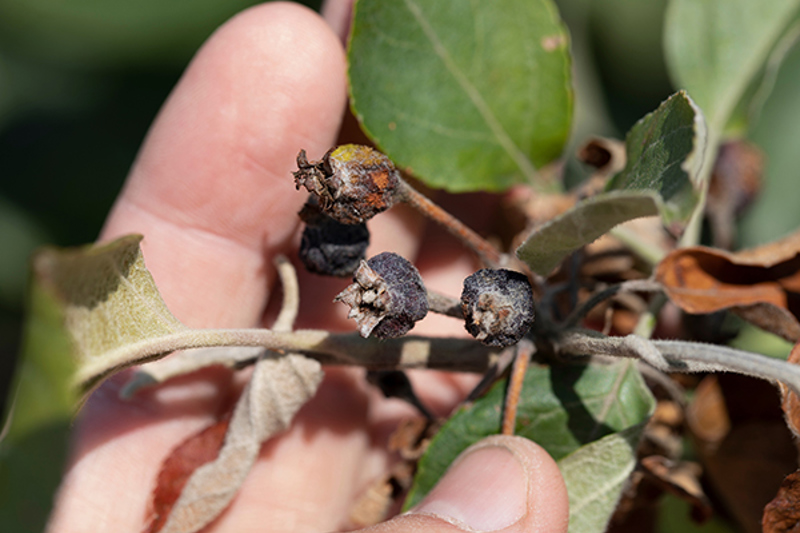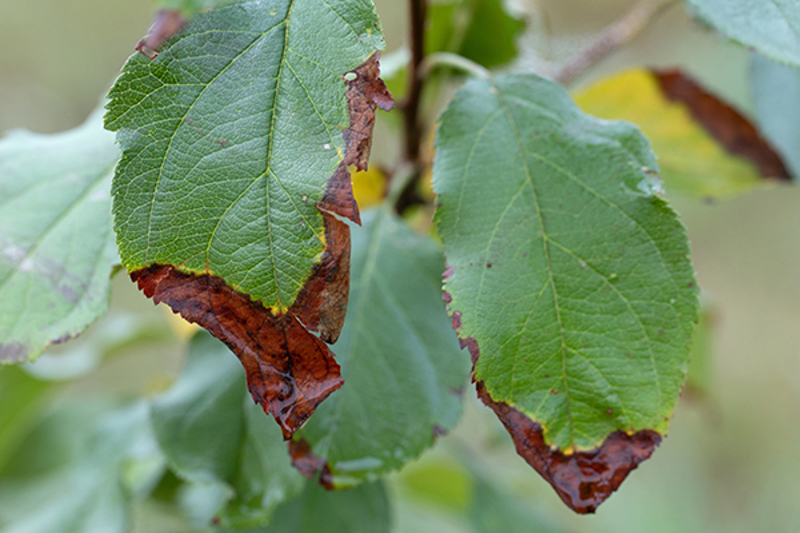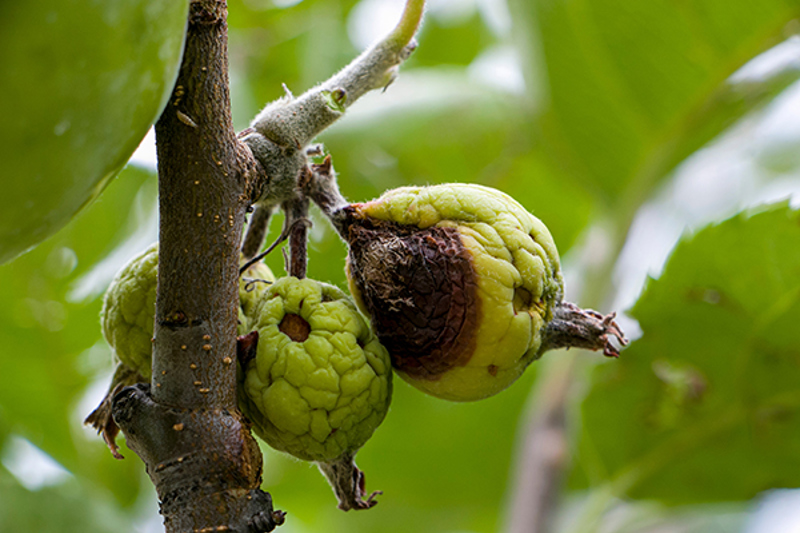Yates Account
Join now
Create a Yates account today!
Sign up to join the Yates Garden Club for monthly e-mails packed with seasonal inspiration, tips for success & exclusive promotions.
Plus if you’re a Garden Club member you can take part in the Yates Growing Community - a blog to share successes, get advice & win prizes in fun challenges along the way!

Forgot password
Enter the email address associated with your account, and we'll email you a new password.
Erwinia amylovora

What is Fireblight?
A bacterial disease that affects pear and apple trees, ruining blossoms and fruiting spurs, then causing scorched-looking leaves, before killing off entire branches. The disease dramatically reduces fruit yield, and may eventually cause tree death if left untreated.
Fireblight overwinters in infected plant tissue. The pathogen is spread by insect pollinators (the bacteria contaminates the nectar of infected plants), rain splashes and poor pruning tool hygiene. The disease can enter trees via flowers, fruit, foliage or fresh wounds. High humidity and warm temperatures in flowering season increase the infection risk, just when blossom and vulnerable new growth is forming.
The disease progresses very quickly, so it needs to be tackled immediately when you see symptoms.

Symptoms
The earliest symptoms are browning of flowers and blackened flower stalks. The disease progresses into the fruiting spur, causing the growing tips to wilt and leaves to develop distinctive burnt-looking edges. Infected leaves continue to darken before dying off. The infection continues into the lateral branch, where it can form a brown, watery-looking canker on bark (most common in pears).
The infection site spreads and extends underneath the bark further than the visible outward symptoms, causing reddish-brown stained discolouration of the sapwood.
Fruit that is infected through buds or flowers will turn brown and soft. Fruit can also be infected through the skin, which forms dark brown patches that rot the fruit.

How to Protect Your Plants
Prevent infections with regular applications of Yates Copper Oxychloride during bud burst, green tip (September), leaf fall (May) and winter dormancy.
Prevention is much easier than treating a fire blight infection. The only reliable control is to wait for dry conditions, then physically cut off the diseased tissue and burn the offcuts. Sterilise tools between cuts to prevent the disease spreading - wipe tool blades with methylated spirits, a 9:1 mix of water and bleach, or alcohol wipes, then rinse with water.
- Remove and burn all infected plant parts. On branches, strip back the bark around your cut to check for discoloured sapwood. If you find any, keep stripping bark to find the end of the staining, so you can remove all the discoloured tissue. When you arrive at clean sapwood, cut off an extra 30-40cm margin outside it.
- Apply Yates Copper Oxychloride to the affected areas after the removal of dead tissue, then seal and protect the wounds with Yates PruneTec (which forms a barrier against bacterial pathogens re-infecting the cuts).
- Avoid applying high-nitrogen fertilisers to infected trees.
- Avoid pruning during the high risk spring period - it's much better to prune during winter dormancy. Burn pruning offcuts to prevent reinfection.

Plants Impacted:
- Apples
- Pears
- Quinces
- Cotoneaster species, including Photinia













Share
Share this article on social media